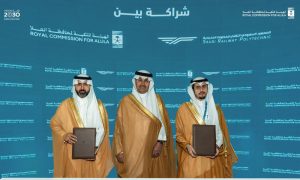A Kut above
Volvo’s EMEA regional director is addressing an audience gathered from across his territory and he is keen to make sure that everyone gets the appropriate greeting. “And we have a gentleman here from Saudi here today….welcome,” he smiles. “How do you say it again?” The reply comes back: as-salamu alaykum. “Ah yes of course!” Kuta […]

Volvo’s EMEA regional director is addressing an audience gathered from across his territory and he is keen to make sure that everyone gets the appropriate greeting.
“And we have a gentleman here from Saudi here today….welcome,” he smiles. “How do you say it again?” The reply comes back: as-salamu alaykum. “Ah yes of course!”
Kuta is the Czechoslovakia-born head of Volvo’s re-energised assault on the EMEA region which has had a new lease of life since the company shed Volvo cars to Ford. He beams energy across the room as he speaks, his accent perceptibly Czech but with an American-twang.
Once a professional skier, he crossed the iron curtain in 1980s and earned US citizenship in 1989. When Eastern Europe once again opened, he returned as head of Apple Computers in his native homeland before joining Volvo in 1997.
An athlete, global citizen, multi-lingual and approachable – he’s the sort of senior executive that many in his position profess to being but seldom are.
Kuta first really made his mark on Volvo CE when he led its return to the Russian market in 1998 proving that it was possible to make sense of the vast country by balancing Volvo’s own dealerships with the independent dealer network.
As of 2012 Russia is the fastest growth market in the EMEA region for Volvo CE and the company is investing big in the country. Its factory in Kulaga close to Moscow is about to become the centre for a new excavator plant that will stretch of 20,000 sqm. Due to open next year it will produce 20t to 48t range of machines at a rate of 2,000 units per year.
Kuta says that the factory will primarily be focused on serving Russia but could later down the line serve similar markets such as the Middle East: “We will see how this can be utilised for other parts of EMEA.”
“I spent three years in Russia running our own dealership but we have now taken the next step and divested to a private dealership (Swedish company Ferronordic). They have 50 locations in Russia, the plan is to invest 700 million SEK by 2015. In 2008 we had 238 people and now it is over 500. It will be 1,000 by 2015.”
At its recent launch event in Lorient, France the company demonstrated a number of new machines such as the 50 ton class EC480D excavator, the A35F articulated hauler and the the L250G wheel loader.has released more than 50 new machines in the past year as it joins it peers in the race to meet new emission restrictions on engines. Despite the continuing fluctuation in the markets it has helped to buoy sales. In the first quarter sales increased by 17% to almost 18 billion Swedish crowns (the equivalent of nearly 2.1 billion euros) and the increase in operating income of 21% to the equivalent of 248.5 million euros and an operating margin of 11.8%.
Kuta enthuses: “It was one of our best ever quarters.”
He explains that the Middle East and Africa come under two separate logistics hubs – East and South. He is sounds proud when he describes the EMEA:
“Maybe I’m being subjective but to me it is the most diverse in the group. It has some the most mature and some of the fastest and growing.”
When asked which markets have surprised him in the past year, his eyes light up.
“I like positive!,” he says. “We have a number of markets that are doing very well. Yes, the Middle East Saudi Arabia, the UAE and Turkey has been very robust. And Russia is exploding. It grew 70% in the first quarter. However there you feel cautiousness because of fuel prices. Africa has been good overall but there’s been some slowdown because of Egypt and Libya. Algeria, Morocco, sub-Saharan Africa have been excellent. We see steady growth of 15%.”
He adds: “Europe was not a catastrophe but the outlook is so uncertain.”
According to Kuta, the total size of the construction equipment Middle East market is in the region of 30-35,000 units per year and Africa 17,000: “the growth rate is 30-35% in the Middle East and Africa 10-15%.”
The current landscape of machinery manufacturing sees multi-strand companies like Volvo, Caterpillar, Liebherr streaking to the horizon while others are struggling in their niches. In June Volvo up its stake in engine specialist Deutz from 6.7% to 25%. Kuta steers clear of suggesting the company is on the acquisition trail.
“If you look at mining for example, it is not a buyers market. In construction, you look at companies and they are doing very well too.”
The diverse nature of the EMEA market presents Volvo and Kuta with the not inconsiderable problem of servicing customers that will be needing its Tier 4 final engines and those like the Middle East and Africa that because of the high sulphur content will be unable to use the new machines.
“Everybody knows the technologies that will be available (such as SCR – selective catalytic reduction) but in terms of transportation between the regions, so far we cannot transport Tier 4 interim out of Europe. Especially to countries that do not have low sulphur fuel such as the Middle East and Africa.
“At the moment we don’t have any conversion kits and surprisingly, so far, we have not had too much call for it from customers. But we are prepared should it become a big question. I’m sure we can handle it.”




















